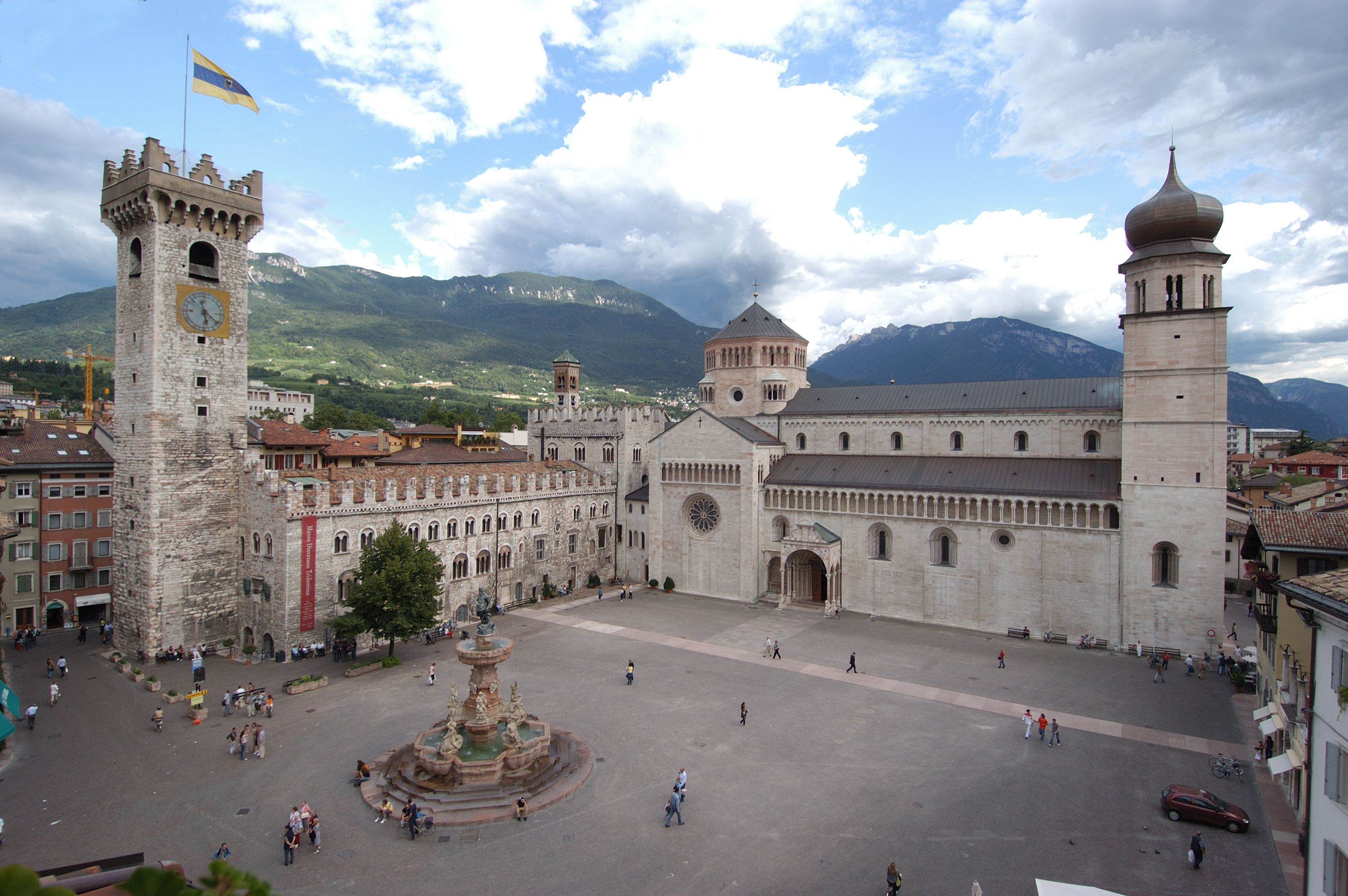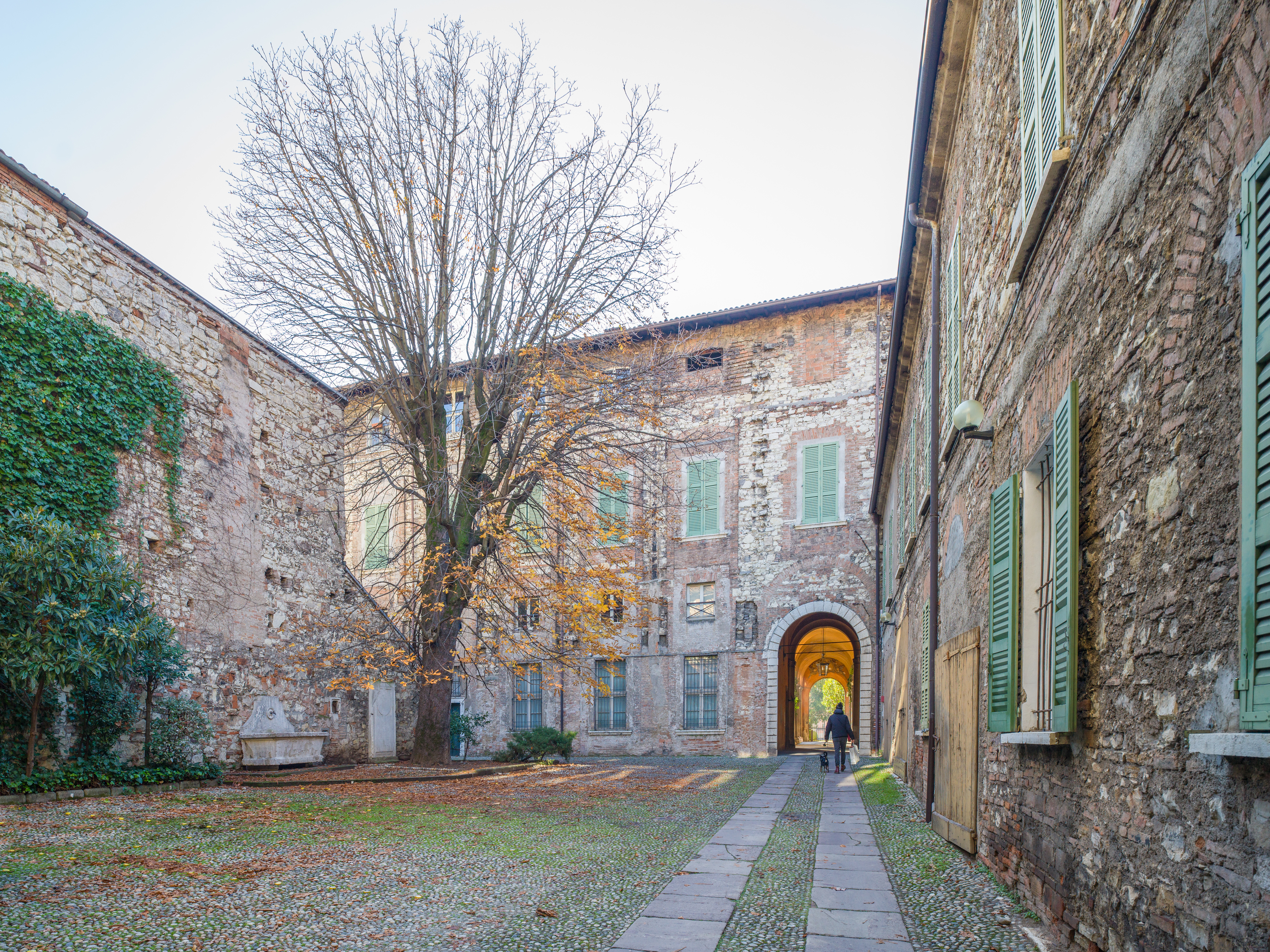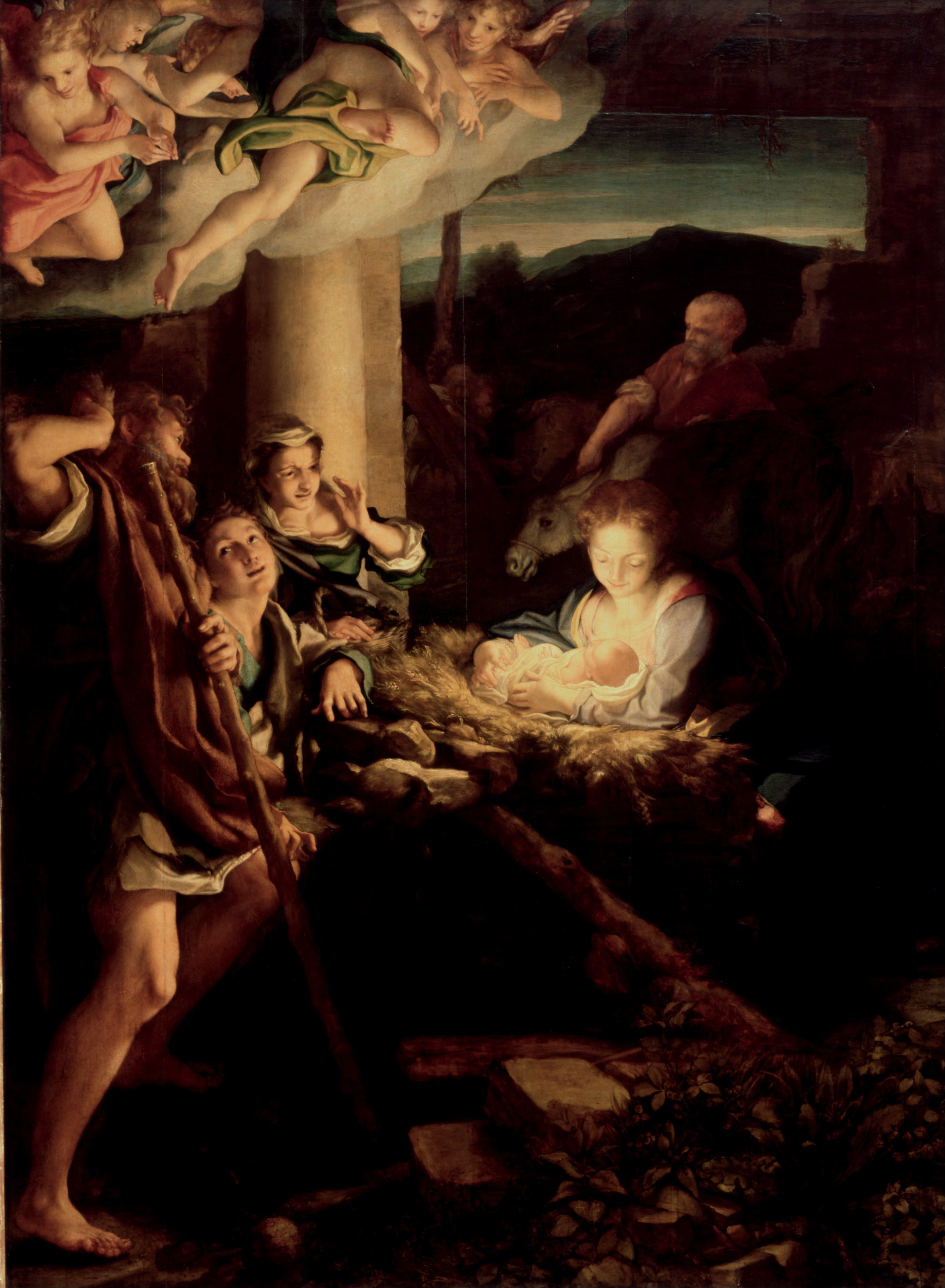|
Girolamo Romani
Girolamo Romani, known as Romanino ( – ), was an Italian High Renaissance painter active in the Veneto and Lombardy, near Brescia. His long career brought forth several different styles. Biography Romani was born in Brescia. His early training and life are not well documented. A Quattrocento-esque ''Pietà'', painted for the church of ''San Lorenzo'' of Brescia, dated from 1510, is exhibited in the Accademia. He took up residence in Venice in his twenties, at the latest by 1513. He was commissioned to complete a ''Madonna enthroned with four saints'' for the church of Santa Giustina in Padua in 1513. The coloration of the painting is of Venetian style, but the duller visages in bejeweled setting recalls styles of previous generations. He completed series of frescoes for Niccolò Orsini's Palace in Ghedi and an altarpiece for San Francesco, Brescia. Romanino completed four frescoes in the nave of the cathedral of Cremona in 1519–1520 depicting stories of the ''Passio ... [...More Info...] [...Related Items...] OR: [Wikipedia] [Google] [Baidu] |
Lattanzio Gambara
Lattanzio Gambara (c. 1530 – 18 March 1574) was an Italian painter, active in Renaissance and Mannerism, Mannerist styles. It is likely that Gambara is the same 16th century painter referred to as ''Lattanzio Cremonese'' or ''Lattanzio da Cremona''. Biography Born in Brescia, Gambara initially apprenticed, aged fifteen, with Giulio Campi in Cremona. By 1549 he was working alongside Girolamo Romanino, who became his father-in-law. Gambara's work also shows the influence of il Pordenone. An altarpiece of S. Maria in Silva dates to 1558. He painted frescoes in the Villa Contarini in Asolo. Another fresco cycle on the ''History of the Apocalypse'' decorated the Loggia of Brescia, until it was destroyed by bombing in 1944. In his maturity the artist returned to Brescia to work with Romanino in a series of generally lost frescoes for Sant'Eufemia and Saint Lorenzo in Brescia. He painted altarpieces, all but one of them now lost, for the Polirone Abbey, abbey of Saint Benedict in Pol ... [...More Info...] [...Related Items...] OR: [Wikipedia] [Google] [Baidu] |
Cathedral Of Cremona
Cremona Cathedral (, ''Cattedrale di Santa Maria Assunta''), dedicated to the Assumption of the Blessed Virgin Mary, is a Catholic Church, Catholic cathedral in Cremona, Lombardy, northern Italy. It is the seat of the Bishop of Cremona. Its bell tower is the famous Torrazzo di Cremona, Torrazzo, symbol of the city and tallest pre-modern tower in Italy. Also adjoining is the Battistero di Cremona, baptistery, another important medieval monument. History Originally built in Romanesque architecture, Romanesque style, the cathedral has been restored and extended several times, with Gothic architecture, Gothic, Renaissance architecture, Renaissance and Baroque architecture, Baroque elements. Construction began in 1107, but the works were damaged and halted after an 1117 Verona earthquake, earthquake in 1117. Construction resumed in 1129, and the building was probably finished in 1160-1170. The main altar, dedicated to the city's patron saints Archelaus of Cremona, Archelaus and Himeriu ... [...More Info...] [...Related Items...] OR: [Wikipedia] [Google] [Baidu] |
Trento
Trento ( or ; Ladin language, Ladin and ; ; ; ; ; ), also known in English as Trent, is a city on the Adige, Adige River in Trentino-Alto Adige/Südtirol in Italy. It is the capital of the Trentino, autonomous province of Trento. In the 16th century, the city was the location of the Council of Trent. Formerly part of Austrian Empire, Austria and Austria-Hungary, it was annexed by Kingdom of Italy, Italy in 1919. With 118,142 inhabitants, Trento is the third largest city in the Alps and second largest in the historical region of Tyrol. Trento is an educational, scientific, financial and political centre in Trentino-Alto Adige/Südtirol, in Tyrol and Northern Italy in general. The city contains a picturesque Medieval and Renaissance historic centre, with ancient buildings such as Trento Cathedral and the Castello del Buonconsiglio. Together with other Alpine towns Trento engages in the Alpine Town of the Year Association for the implementation of the Alpine Convention to achie ... [...More Info...] [...Related Items...] OR: [Wikipedia] [Google] [Baidu] |
Castel Buonconsiglio
Buonconsiglio Castle () is a castle in Trento, northern Italy. History The castle originated from a fortified building that was erected in the 13th century next to the city's walls. This first building was called Castelvecchio (literally, 'old castle'), and was the seat of the Bishopric of Trent from the 13th century onwards to the end of the 18th century. The castle is composed of a series of buildings of different eras, enclosed by a circle of walls in a slightly elevated position above the town. The, as called, Castelvecchio is the oldest and most dominant building of the entire housing development. The Magno Palazzo is the sixteenth expansion in the forms of the Italian Renaissance, wanted by the Prince Bishop and Cardinal Bernardo Clesio (1485-1539), the third part, in the southern end of the complex is the known Eagle tower, which preserves the famous Cycle of the Months, one of the most fascinating pictorial cycles of profane late Middle Ages. Bishop George of Liechten ... [...More Info...] [...Related Items...] OR: [Wikipedia] [Google] [Baidu] |
Dosso Dossi
Giovanni di Niccolò de Luteri, better known as Dosso Dossi ( 1489–1542) was an Italian Renaissance painter who belonged to the School of Ferrara, painting in a style mainly influenced by Venetian painting, in particular Giorgione and early Titian. From 1514 to his death, he was court artist to the House of Este, Este Dukes of Ferrara and of Modena, whose small court valued its reputation as an artistic centre. He often worked with his younger brother Battista Dossi, who had worked under Raphael. He painted many mythological subjects and allegories with a rather dream-like atmospheres, and often striking disharmonies in colour. His portraits also often show rather unusual poses or expressions for works originating in a court. Biography Dossi was born in San Giovanni del Dosso, a village in the province of Mantua. His early training and life are not well documented; his father, originally of Trento, was a bursar (''spenditore'' or ''fattore'') for the Dukes of Ferrara. He may ha ... [...More Info...] [...Related Items...] OR: [Wikipedia] [Google] [Baidu] |
Bartolomeo Colleoni
Bartolomeo Colleoni (; 1400 – 2 November 1475) was an Italian condottiero who served as the captain-general of the Republic of Venice. Colleoni gained a reputation as one of the foremost tacticians and disciplinarians of the 15th century.''Webster's New Biographical Dictionary'', 1983, Springfield, Massachusetts: Merriam-Webster, Inc., p. 223. He is also credited with refurbishing the Roman baths at Trescore Balneario. Biography Background Colleoni was born in Solza near Bergamo, which was then part of the Duchy of Milan. In Bergamo Colleoni later built himself a mortuary chapel, the '' Cappella Colleoni''. The Colleoni family was noble, but had been exiled with the rest of the Guelphs by the Visconti of Milan. Bartolomeo's father Paolo Colleoni had seized the castle of Trezzo, until he was assassinated by his cousins, probably acting on the orders of Filippo Maria Visconti, Duke of Milan. Career The young Colleoni trained as a soldier, first in the retinue of Filippo ... [...More Info...] [...Related Items...] OR: [Wikipedia] [Google] [Baidu] |
Bergamo
Bergamo ( , ; ) is a city in the Alps, alpine Lombardy region of northern Italy, approximately northeast of Milan, and about from the alpine lakes Lake Como, Como and Lake Iseo, Iseo and 70 km (43 mi) from Lake Garda, Garda and Lake Maggiore, Maggiore. The Bergamo Alps () begin immediately north of the city. With a population of 120,580 as of 2025, Bergamo is the fourth-largest city in Lombardy. Bergamo is the seat of the province of Bergamo, which counts more than 1,115,037 residents as of 2025. The metropolitan area of Bergamo extends beyond the administrative city limits, spanning over a densely urbanized area with slightly fewer than 500,000 inhabitants. The Bergamo metropolitan area is itself part of the broader Milan metropolitan area, home to more than 8 million people. The city of Bergamo is composed of an old walled core, known as ('Upper Town'), nestled within a Parco dei Colli di Bergamo, system of hills, and the modern expansion in the plains below. Th ... [...More Info...] [...Related Items...] OR: [Wikipedia] [Google] [Baidu] |
Castle Of Malpaga
The Malpaga Castle () is a castle in the communal territory of Cavernago, a village in the province of Bergamo, northern Italy. Its main features are the interior rooms frescoed by the Renaissance painter Il Romanino. History An early medieval castle had been in ruins after a raid in the 1440s. In 1456, the condottiero and nobleman Bartolomeo Colleoni acquired the ruined castle from the commune of Bergamo. He enlarged and enriched it not only as a military base for his troops, but also as a seigneurial residence, in the typical Italian Renaissance fashion. The castle layout is square, surrounded by two lines of walls and a ditch. The first line, now disappeared, included the stables and the barracks. The walls are characterized by merlons. The castle's internal walls are almost entirely frescoed, although some of them have deteriorated or been vandalized. Some frescoes celebrate the 1474 visit of King Christian I of Denmark and the sumptuous hospitality given him by Bartolomeo Co ... [...More Info...] [...Related Items...] OR: [Wikipedia] [Google] [Baidu] |
Palazzo Averoldi
Palazzo Averoldi is a historic building in Brescia located on Via Moretto at number 12. It was built starting in the 16th century in the middle of the southern historic center, in what was once the so-called Quadra di San Giovanni. Built at the behest of the powerful and influential Averoldi family, the aristocratic palace represents one of the greatest examples of Brescian artistic production in the civic sphere and contains, in its rooms and interior halls, important decorations and frescoes from the 16th-century period by painters such as Romanino and Lattanzio Gambara, two of the major protagonists of Brescian art during the period between Renaissance and Mannerism. History A new palace Toward the end of the 15th century, Giovan Paolo Averoldi, "''a most virtuous and devout man''," purchased several pieces of land from the Porcellaga family in the vicinity of the city walls, in the then Contrada di Santa Croce, also known as Contrada del Bue, or even "''della fontana de ... [...More Info...] [...Related Items...] OR: [Wikipedia] [Google] [Baidu] |
Luca Cambiaso
Luca Cambiaso (also known as Luca Cambiasi and Luca Cangiagio (being ''Cangiaxo'' the surname in Ligurian (Romance language), Ligurian); 18 November 1527 – 6 September 1585) was an Italian Painting, painter and draughtsman and the leading artist in Genoa in the 16th century. He is considered the founder of the Genoese School (painting), Genoese school who established the local tradition of historical fresco painting through his many decorations of Genoese churches and palaces. He produced a number of poetic Night in paintings (Western art), night scenes. He was a prolific draughtsman who sometimes reduced figures to geometric (even cubic) forms.Lauro Magnani. "Cambiaso, Luca." Grove Art Online. Oxford Art Online. Oxford University Press. Web. 14 Mar. 2016 He was familiarly known as Lucchetto da Genova. Life Cambiaso was born in Moneglia, then part of the Republic of Genoa, the son of a painter named Giovanni Cambiaso. Cambiaso was precocious, and at the age of fifteen he pain ... [...More Info...] [...Related Items...] OR: [Wikipedia] [Google] [Baidu] |
Antonio Da Correggio
Antonio Allegri da Correggio (August 1489 – 5 March 1534), usually known as just Correggio (, also , , ), was an Italian Renaissance painter who was the foremost painter of the Parma school of the High Renaissance, who was responsible for some of the most vigorous and sensuous works of the sixteenth century. In his use of dynamic composition, illusionistic perspective and dramatic foreshortening, Correggio prefigured the Baroque art of the seventeenth century and the Rococo art of the eighteenth century. He is considered a master of chiaroscuro. Early life Antonio Allegri was born in Correggio, a small town near Reggio Emilia. His date of birth is uncertain (around 1489). His father was a merchant. Otherwise little is known about Correggio's early life or training. It is, however, often assumed that he had his first artistic education from his father's brother, the painter Lorenzo Allegri. In 1503–1505, he was apprenticed to Francesco Bianchi Ferrara in Modena, where he ... [...More Info...] [...Related Items...] OR: [Wikipedia] [Google] [Baidu] |






